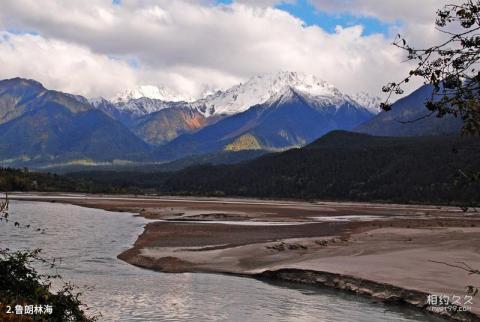
Introduction to Lulang Linhai: The warm and humid airflow from the Indian Ocean, carrying abundant water vapor, climbs up the Yarlung Zangbo Grand Canyon, and is eventually intercepted by the huge mountain of Mira Mountain. These warm and humid airflows rippling in the Nyingchi Valley nourish The dense forests of Lulang have been removed, making the place lush and green all year round, and finally formed the much-talked-about landscape - Lulang Forest Sea. When Linzhi was hailed as the "Little Switzerland of the East" by many tourists, the undulating green forests in Lulang played an important role. Wooden fences, wooden houses, dotted herdsmen's villages, winding streams on the meadows, wild flowers blooming, clouds and mist in the mountains gather and disperse, and the snow-capped mountains, forests and countryside outline a quiet and beautiful "mountain dwelling picture". The best time to visit Lulang Linhai is undoubtedly from July to mid-September every year. At this time, the forest sea is lush, the vegetation is prosperous, and wild flowers are everywhere. Before July and after September, the plateau climate plus warm and humid airflow will make the place become humid and cold.
Transportation in Lulang Forest and Sea Scenic Area: Many people pass by Lulang and watch the beautiful forest scenery in their cars. Because whether you are going from the Sichuan-Tibet Line (National Highway 318) to Lhasa, or from Lhasa to Bomi, you will pass through this forest road about 20 kilometers long. The round-trip distance from Lhasa to Bomi is nearly 1,000 kilometers. The cost of chartering a bus from Lhasa to Lulang is about 2,500 yuan for about 3 days. By the way, you can also visit many other attractions in Nyingchi. There are shuttle buses from Bomi to Linzhi every day, usually departing before 10 am, and the cost is 80 yuan/person.
